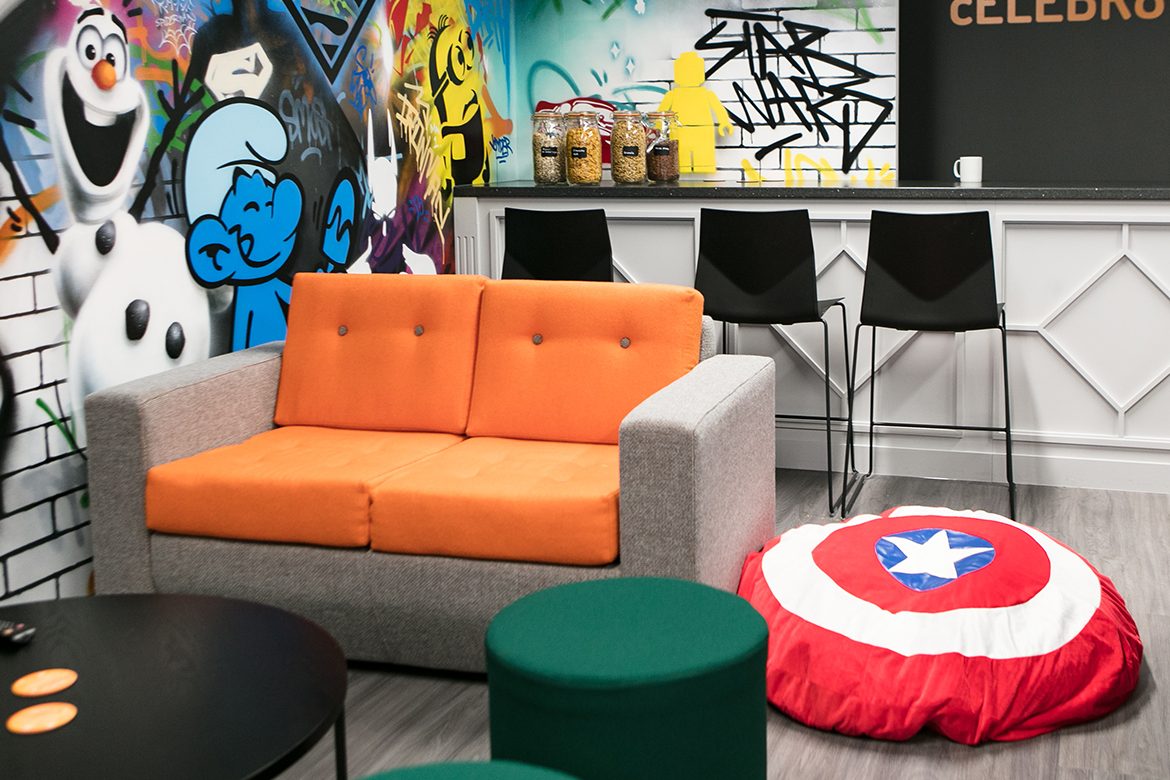
April, 2018
Some of the features included within offices designed for wellbeing include choices for working in different zones and areas, biophilic, natural designs, and strategic use of light and colour to enhance productivity.
Modern offices feature a variety of design elements to promote workplace wellbeing. Increased wellbeing at work can lead to improved morale, greater employee retention, and staff taking fewer sick days.
Designing an office for employee wellbeing is a popular modern concept that can result in enhanced productivity, reductions in sick days and improved workplace morale. Workplace wellbeing is perceived to be the aspect of an employee’s overall wellbeing that is primarily determined by work and can be influenced by interventions from employers.
Creating an office design for workplace wellbeing
Modern office designs offer employees a range of choices, as the days when we would spend an entire shift working at a desk seem long gone. A design for workplace wellbeing will incorporate a variety of different work settings, allowing workers to choose the areas in which they work and how they will accomplish that task. Examples of possible work settings include breakout spaces for collaborative working and group sessions, private areas which are designed to promote focused working, and social areas, such as lounges and coffee bars where employees can work in comfort.
Though office desks will still be the location at which we’ll carry out the bulk of our work tasks, employees are given the choice of sitting or standing while working, via the use of sit-stand desks. This is a way to promote greater movement while in the workplace and cut out the sedentary style of working which is anathema to workplace wellbeing. Standing at work cuts blood pressure and reduces cholesterol and levels of stress. Good office designs will, therefore, feature a sprung floor, comfortable carpets or specialist mats to enhance the pleasures of standing while working.
Good lighting is another requirement of offices designed for workplace wellbeing, and ideally this should be natural light whenever possible. Strategic use of colour can also have an impact on employee mood. Blues and greens will enhance feelings of wellbeing and calm, while bright reds or yellows can add a sense of dynamism to busy areas, like marketing departments.
Biophilic office design entails bringing the natural world into the workplace and many companies appreciate the benefits this offers. It’s not just a case of adding plants and greenery to the office though. Biophilic design may involve adding natural walling, such as cork to feature walls in offices and meeting rooms, or incorporating water features and other natural elements in lunch rooms or reception areas. Introducing elements of biophilic design into the workplace can lead to increased oxygen levels, resulting in improved focus and concentration and a greater sense of wellbeing.
Many more businesses are adding areas within the workspace to encourage increased activity. This can range from the installation of a workplace gym to spaces for table games, such as table tennis or bar football. It’s also becoming increasingly common for offices to incorporate bike storage areas, changing rooms and shower facilities within the workplace.